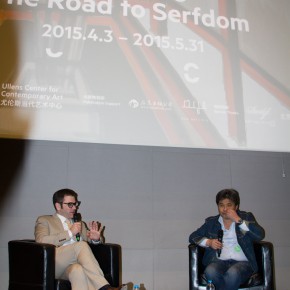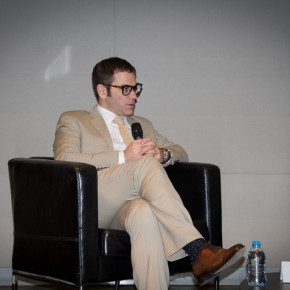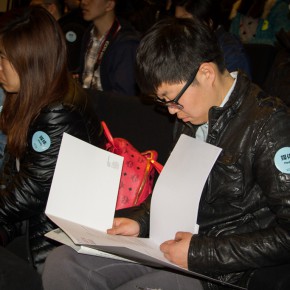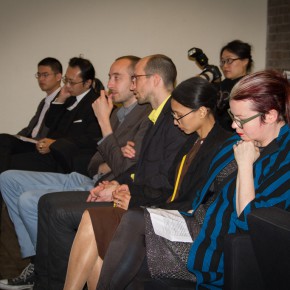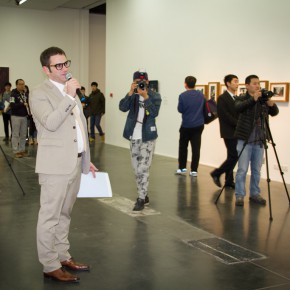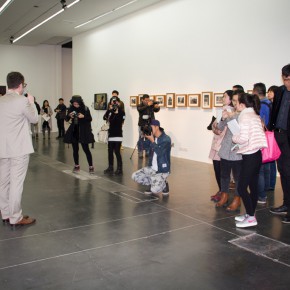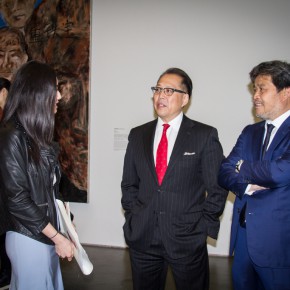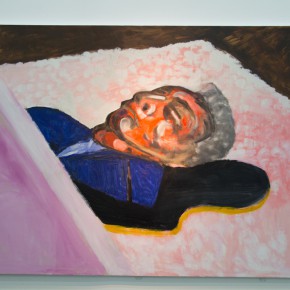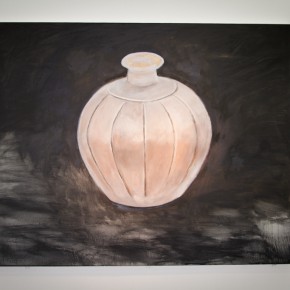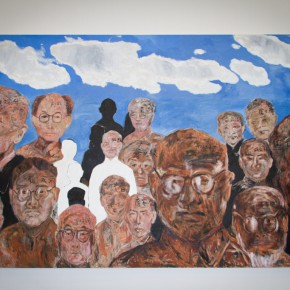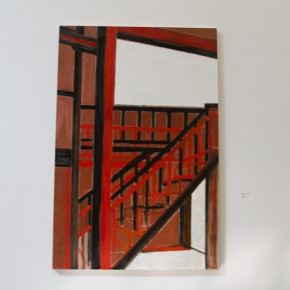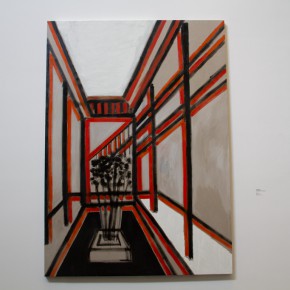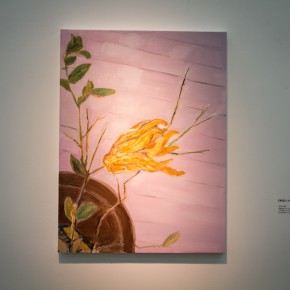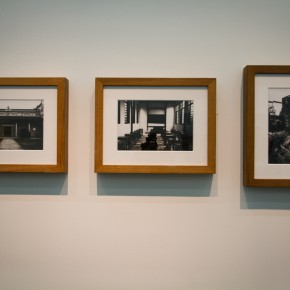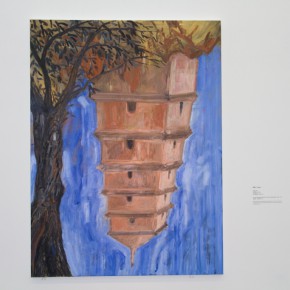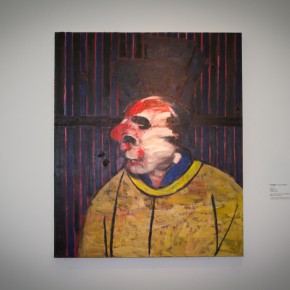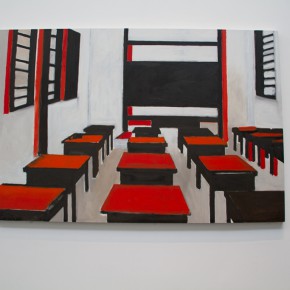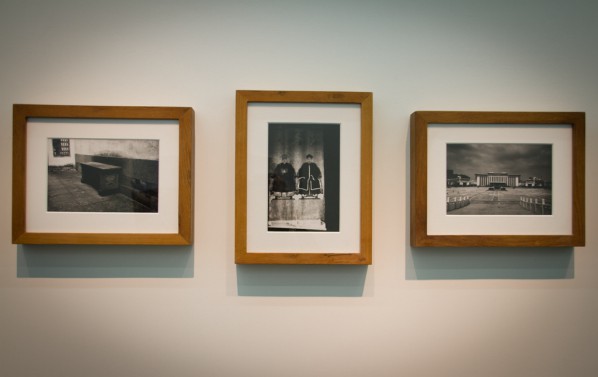
At 3:00 pm on April 2, 2015, the press conference for the “Zhao Gang: The Road to Serfdom” exhibition opened at UCCA. The conference unfolded in the form of an on-site dialogue between Philip Tinari and Zhao Gang which revealed the original purpose of the exhibition. Zhao Gang said in the conversation that, “at the beginning, my friend in the primary school sent me some photos of the elite members of the Republic of China using WeChat because he believed that my identity was similar to theirs, with the typical images of the intellectuals of the Republic of China. I found they all had interesting stories and wore glasses. This seemed very fashionable in the 1920s and the 1930s. The key was that they all returned to their homeland after studying abroad in a very famous school, then they stayed in China in the 20th century. They had experienced the Cultural Revolution, namely the anti-rightist movement, most were tortured to death, and some died from ill health. It certainly reminded me of myself, as I also returned to my homeland after studying abroad in a foreign country, this reminded me of my identity.” After the conference, Philip Tinari guided the media to visit the exhibition. The works on display are in the Nave and Long Gallery from April 3 and runs through to May 31.
“Zhao Gang: The Road to Serfdom,” a collection of works produced by the artist during the last year, including fifteen paintings, nineteen photographs, and two short films. The exhibition brings together recurring themes evolved throughout Zhao Gang’s long career—the identity of the wanderer, his critique of reality and history, and his research into the language of painting. Titled after the economist Friedrich von Hayek’s treatise on the detriments of a planned economy, Zhao Gang’s tacit confirmation of the book’s message offers viewers a context from which to unpack his show.
In preparation for the exhibition, Zhao Gang visited the home villages of several prominent scientists and intellectuals involved in China’s 1919 May Fourth Movement—Wu Mi, Hu Sidu, Xiao Guangyan, Feng Zikai, Ma Yinchu, Yu Guangyu, and Qian Jin among others—in search of visual subject matter. These early twentieth-century thinkers were educated abroad and returned with an heated passion to construct the homeland, suffering countless setbacks but never abandoning their ideals. Juxtaposing his personal journey with the trajectory of this group, Zhao Gang hints at a resonance therein. After participating in the late 1970s exhibitions of the Stars Group, widely considered China’s first modern art movement, Zhao Gang left China to study and live abroad for more than twenty years, assuming several roles along the way—among them an investment banker and publisher of ArtAsiaPacific—before finally returning to China in the early 2000s. For this exhibition, however, his film The Road to Serfdom and the photography series “Pics of the Road” make no reference to the tremendous upheavals of modern China, preferring to feature banal scenes that have remained unchanged for several decades.
The paintings featured here navigate a gray area between the subjective and objective. In depicting these selected individuals’ classrooms, living quarters, and surrounding landscapes from a first-person perspective, Zhao Gang seems to be “performing” as a stand-in, turning their portraits into his own. The exhibition also contains several still life paintings, executed in the same frenetic, heavy strokes of intense colors that hint at multivalent meaning. His personal reflections imbue these “neutral” subjects of landscape, portraiture, and still life with a deadpan humor carried throughout the exhibition. Once an ancient innovation, ceramic wares like that depicted in an Hi-tech form became a plaything for emperors, and the “Buddha’s Hand” citrus flower of Handjob is a religious symbol in several cultures. These visual motifs question the social function of science and religion from a broad spectrum. Meanwhile the monumental group portrait Cocksucker Blues brings viewers face to face with the scholars that served as inspiration for the show, their belabored, brown bodies forming a bulbous mountain underneath an uncannily blue sky.
The only previously shown work, Harlem School of New Social Realism (2002, 2007) is a recording of Zhao Gang and several other American artists and scholars of color discussing possible forms and features for a future collaboration, produced for The Long March: A Walking Visual Display shortly before he returned to China for good. This work makes clear Zhao Gang’s line of inquiry is not rooted in a specific geography or culture, but rather comments on a larger human condition.
Opening to the public on April 3 and running through to May 31, 2015, the exhibition is curated by UCCA Director Philip Tinari with Assistant Curator Guo Xi. Several Public Programs, including lectures and workshops, accompany the show. For more details check the UCCA website. The exhibition is accompanied by the survey catalogue GANG, Zhao Gang’s most comprehensive, bilingual publication to date. Taking “The Road to Serfdom" as its thematic structure, the catalogue contains an expansive selection of artwork images and photographs drawn from the artist’s archives, spanning nearly four decades of his life and career. Contributing writers are Simone Levine, Michael Murray, Franklin Sirmans, Sun Dongdong, Philip Tinari, and Christian Viveros-Fauné. The catalogue is published by Post Wave Publishing Consulting. The exhibition catalogue is sponsored by aye gallery, Galerie Christian Nagel, and Post Wave Publishing Consulting. Special thanks to Davidoff Art Initiative and Beijing WeiJi Preservation International Center Company for their additional support.
About the Artist
Zhao Gang (b. 1961, Beijing) made his artistic debut as a member of the Stars Group, one of the first avant-garde artist groups to open the era of contemporary art in China, when he was just 18 years old. Shortly thereafter he pursued formal art education in Europe then New York, where he lived for over two decades, developing a diverse body of work as his perspective became distinctively international. Over the course of his wanderings, Zhao Gang has been featured alongside prominent Chinese painters Liu Wei and David Diao; participated in PERFORMA, the Guangzhou Triennial, and the Yokohama Triennial; presented his solo exhibition “Sick Man” at the Today Art Museum in Beijing; and exhibited elsewhere in the United States, Germany, China, France, and Japan. Since returning to Beijing in 2004, Zhao Gang has turned his ever-expanding focus toward the entanglement of his personal past with Chinese history and his unique position, at once a native and a newcomer, in China today.
About the Ullens Center for Contemporary Art
The Ullens Center for Contemporary Art (UCCA) is an independent, not-for-profit art center serving a global Beijing public. Located in the heart of Beijing's 798 Art District, it was founded by the Belgian collectors Guy and Myriam Ullens and opened in November 2007. Through a diverse array of exhibitions with artists Chinese and international, it has become established and is emerging. As well as offering a wide range of public programs, UCCA aims to promote the continued development of the Chinese art scene, fostering international exchanges, and showcasing the latest in art and culture to hundreds of thousands of visitors each year.
Text and photo by Chen Peihua and edited by Sue/CAFA ART INFO, for further information please visit http://ucca.org.cn/.


